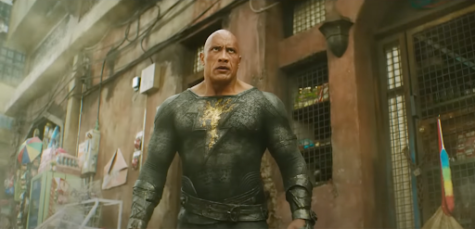
DC Films has been, undeniably, at a crossroads the last few years. Many installments in the “DC Extended Universe” have been critical failures, preventing them from establishing what Marvel has showcased for nearly two decades.
What is most shocking in all of this is “Black Adam” has been in development for more than half as long, as Dwayne “The Rock” Johnson was announced in the role over 15 years ago. Johnson has long lobbied for the titular antihero to reach the big screen, and on Oct. 21, this dream came true.
Johnson’s promotion of the film has been the catalyst for much of the general public’s anticipation. He also claimed the project would change “the hierarchy of power in the DC universe” on several occasions, most notably on his Instagram. This led many fans to expect the film to connect with prior canonical events of other films.
Simply put, this did not happen. In fact, there was more exposition on new lore for the universe than expansion on what was previously established. This may have been the correct move, especially when considering how poorly received previous projects have been.
The character’s backstory, as told in the film’s opening act, is strongly connected to that of 2019’s “Shazam.” However, that is where connections to that property end in this film. But Johnson seems determined to establish his Black Adam character as a Superman counterpart rather than one of Shazam anyway, much to the dismay of comic book loyalists.
Fan-favorite characters like Hawkman and Doctor Fate are also introduced on screen, highlighted by great performances from Aldis Hodge and Pierce Brosnan, respectively. These two steal the show when they are on screen, while also having excellent chemistry with Johnson’s Adam. Two other heroic newcomers, Cyclone (Quintessa Swindell) and Atom Smasher (Noah Centineo), are much more underwhelming as they make their live-action debut. The actors behind these roles do little to make up for poor writing, and their abilities simply fail to leave a mark on the audience.
From a technical perspective, “Black Adam” relies far too much on slow motion during its action sequences. This disrupts the film’s pacing, along with several time jumps in the project that are crucial to the overall plot. With that in mind, the cinematography behind the flashbacks was distractingly unappealing. The filmmakers opted for a bland color palette that simply did not match the rest of the film.
Most audiences will certainly not notice those shortcomings, making “Black Adam” a fun, entertaining adventure that many will enjoy. Yes, the film has its flaws, but that does not detract from the overall entertainment value of “The Rock”’s passion project.
Time will tell what DC’s plan for Johnson is moving forward. Based on the mid-credits scene, there is a lot for fans to be excited about.
“Black Adam” is now playing in theaters nationwide. Previous entries in the DC Extended Universe can be found streaming on HBO Max.







